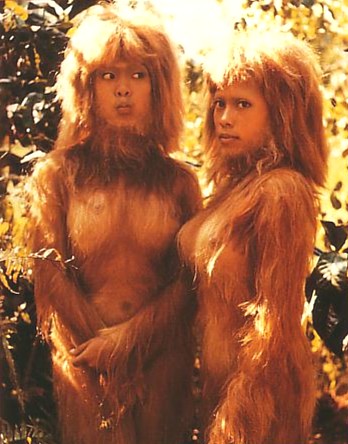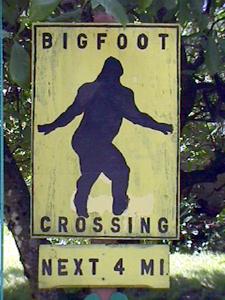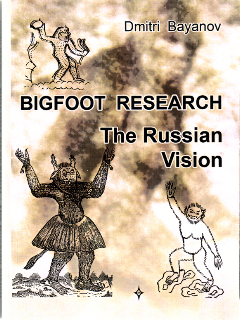
October 5, 2008

Today we reach the 50th year milestone since the first introduction of the term Bigfoot for the unknown hairy hominoids of North America. Perhaps this is a good time to ask: Should the word “homin” replace “Bigfoot”?
I have previously discussed homin, of course, but perhaps the word needs a fresh look?
J.W. Burns created “Sasquatch,” which was first published in 1929, “Bigfoot” popped into use in 1958, and apparently around 1973, Dmitri Bayanov coined “homin.”

Time for a change? What do you think? Should we follow the Russians? Ivan T. Sanderson, in the 1960s, tried to convince everyone to use “Oh-Mah.” Grover Krantz wanted people to employ the term “Sasquatch” instead of “Bigfoot,” because he felt it sounded more scientific. Bayanov wishes folks would start saying “homin” to give new connotations to these unknown species, and move away from “Bigfoot.”

Dmitri Bayanov (from the Russian hominology museum site; Daniel Perez tells me he took the photograph).
Homin was created by Dmitri Bayanov to be used instead of the words Snowman, Bigfoot, Sasquatch, Almas, and other local, regional names of unknown, upright, hairy primates. Bayanov defines homin as a “non-sapiens hominid.”
The contemporary practice of using “homin” appears to be restricted mostly to Russian hominologists and their close associates. While the Russian term “hominology” has persevered and spread among Bigfoot researchers, in general, “homin” has not.

One reason it is not more popular may be that in the English-speaking world, the word “homin” is visually and lingusitically experienced as truncated, almost a typographical error. Also, for those that understand root words, it is viewed as more related to being from the Latin homin-, stem of Latin homo, meaning “human being,” than the generalized Bigfoot or Sasquatch appears to require.
Nevertheless, followers of the Russians, as noted, tend to use “homin” heavily, as reflected, for example, in Will Duncan’s title of his 2002 paper, “The Predictability of Homin Behavior.”
“Actually, homin-ology can be nothing but the science of homins.” – Dmitri Bayanov, Crypto: Hominology Special Number I

“Russian researcher Dmitri Bayanov coined the word ‘hominology’ around 1973, to denote those investigations that study humanity’s as yet-undiscovered near-relatives, including Almas, Yeti, Bigfoot/Sasquatch, and other unknown hominoids. He further defined hominology as a ‘branch of primatology, called upon to bridge the gap between zoology and anthropology’ in a 1973 letter to the London primatologist John Napier. His English paper on the subject was a major breakthrough contribution after decades of unpublicized Russian research and expeditions. The paper, ‘A Hominologist View from Moscow, USSR,’ appeared in Northwest Anthropological Research Notes, (Moscow, Idaho), vol. 11, no. 1, 1977.” – Loren Coleman, from Cryptozoology A to Z
Today, I have modified the meaning slightly, and also would add that the Russians consider their study as that of unknown or hidden hominids only, not of unknown hominoids, because they are not interested, specifically, in any unknown hairy pongids or anthropoids, which may be in the mix.
While some non-Russian Bigfoot hunters agree with the Russians that only hominids are under consideration, for myself and most other North American and non-Russian hominologists, we include all hominoids under the umbrella of “unknown hairy bipedal primates,” thus being inclusive of pongids, anthropoids, and hominids.
But that may all be nit-picking. What do you think of using homin instead of Sasquatch and Bigfoot?
About Loren Coleman
Loren Coleman is one of the world’s leading cryptozoologists, some say “the” leading living cryptozoologist. Certainly, he is acknowledged as the current living American researcher and writer who has most popularized cryptozoology in the late 20th and early 21st centuries.
Starting his fieldwork and investigations in 1960, after traveling and trekking extensively in pursuit of cryptozoological mysteries, Coleman began writing to share his experiences in 1969. An honorary member of Ivan T. Sanderson’s Society for the Investigation of the Unexplained in the 1970s, Coleman has been bestowed with similar honorary memberships of the North Idaho College Cryptozoology Club in 1983, and in subsequent years, that of the British Columbia Scientific Cryptozoology Club, CryptoSafari International, and other international organizations. He was also a Life Member and Benefactor of the International Society of Cryptozoology (now-defunct).
Loren Coleman’s daily blog, as a member of the Cryptomundo Team, served as an ongoing avenue of communication for the ever-growing body of cryptozoo news from 2005 through 2013. He returned as an infrequent contributor beginning Halloween week of 2015.
Coleman is the founder in 2003, and current director of the International Cryptozoology Museum in Portland, Maine.
Filed under Abominable Snowman, Almas, Bigfoot, Cryptomundo Exclusive, Cryptotourism, CryptoZoo News, Cryptozoologists, Cryptozoology, Mapinguary, Men in Cryptozoology, Orang Pendek, Proto-Pygmies, Sasquatch, Skunk Apes, Twilight Language, Windigo, Yeren, Yeti